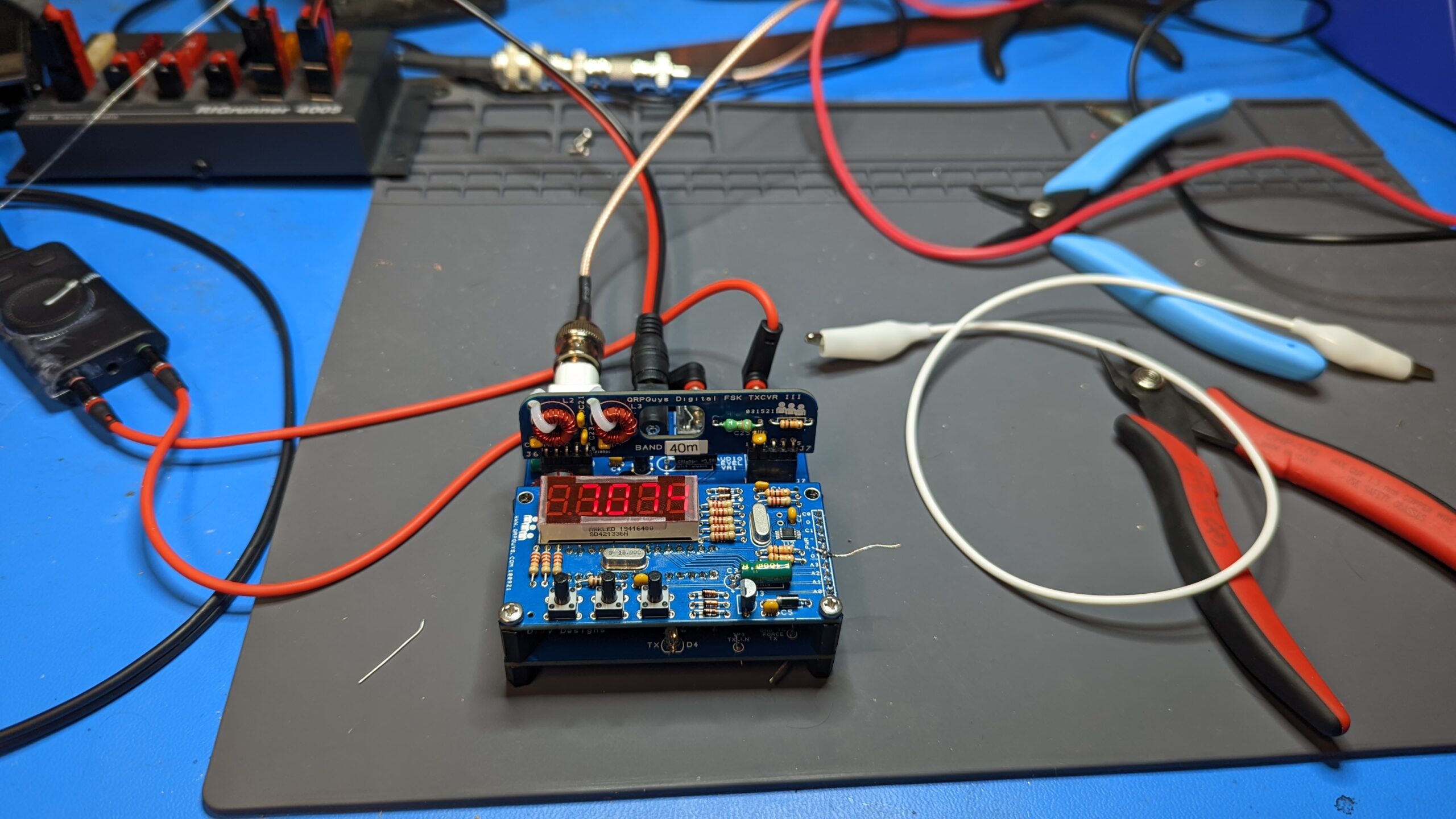Last fall I purchased an AFP-FSK Digital Transceiver III kit and got around to putting it together this spring. From their site “The new QRPGuys AFP-FSK Digital Transceiver III kit for 160m-10m is a low cost, multi-band, multi-digital mode, 5 watt transceiver kit, with VFO and plug-in module kits supplied for 40/30/20m.” At time of writing the price is $80 with extra band module pcb’s for $10. https://qrpguys.com/qrpguys-digital-fsk-transceiver-iii
I would classify this as a more advanced kit build as the project is a combination through hole and surface mount components. It’s recommended to have .015 diameter solder and a small tip for your iron capable of doing SMD work In order to complete the project.
The kit was well packed and the downloadable instructions were clear and concise. It took me around 4 hours spanned over the course of a few nights to complete the initial build. Power up and Receive testing went well. Everything was great until I got to testing the TX and Calibration steps where I ran into a few minor issues.
TX did not initially respond to audio from the computer as expected, but the test pin for TX worked correctly when grounded and at the expected power output of 5 watts. After some troubleshooting I chatted with Chuck (WD8AXA) and told me to seek advice from the CalQRP group.io community. After a few posts back and forth with Ron (N6YWU) we got it sorted out. We discovered that my volume input was simply too low and that things worked fine once I found a way to get enough volume out of my computer setup. My initial volume input level was around 330mV Pk-Pk, but my kit required approximately 950mV Pk-Pk of input signal before it would trigger TX..
The other minor issue I had was with Calibration, but this was simply an error on my part. While in the calibration mode there is no user feedback on the LCD screen of the unit. You should be looking at your O-scope or the Waterfall of the application to do the calibration, not the unit itself.
Once calibrated and the input volumes adjusted, I looked around and found a 3d printable case on Thingiverse and printed it out in blue PLA and we were ready to rock and roll!
Initial on air testing has been promising. While at the time of writing I have yet to make a full contact, spotting reports have been seen as high as -5 and -7 on both 40m and 20m on an EFLW in an inverted vee configuration with 4S-Tuner from the 4SQRP group in line. I look forward to using this kit for some Parks on the Air activations in the coming months.
